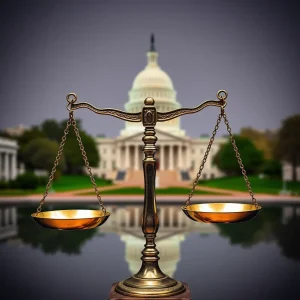South Carolina Trades its All-Male Supreme Court for All-White
Diversity Questioned in the Face of Recent Election
South Carolina has transitioned from an all-male Supreme Court to an all-white one, with the election of Judge Letitia Verdin. Verdin, a white woman, will replace Chief Justice Don Beatty, who is retiring. The South Carolina General Assembly, which selects almost all state judges, unanimously elected Verdin with a vote of 152-0. However, this monumental change has sparked a wider discussion on achieving multifaceted diversity within the state’s highest court.
Discussion on Diversity
The concern arises with the understanding that the southern state comprises a 28 percent Black population. Thus, having a judicial system that isn’t diverse, can raise legitimate concerns about representation. Sen. Tameika Isaac Devine, an African American Democrat and Verdin’s former law school classmate, shared her views on the importance of a diverse court. She said, “She will be an excellent Supreme Court justice. I’m glad we now have that diversity present… But we shouldn’t trade diversity. We need to take a look across the court system.”
A Brief History of Diversity in State’s Judges
Over the past 17 years, the state has had a Black judge on its highest court except for seven years since 1984. In terms of leadership, a woman or a Black man has occupied the chief position for all but one year over the past 30 years. The state also emerged from a time when private clubs denied African Americans entry, even with the authority and prestige of a justice position.
Recent Downturn in Diversity
In a state where 27% of the population identifies as Black, just 13% of the judges in the trial and appellate courts are Black. Moreover, only one judge of color, a Black man, is on the nine-judge state Court of Appeals, often seen as a stepping stone to the Supreme Court. This disparity raises alarming questions about representation and diversity.
South Carolina Joins 18 All-White High Court States
Brennan Center for Justice reports reveal that South Carolina is joining 18 other states with all-white high courts. What’s more concerning is that twelve of these states have minority populations of at least 20%. Considering these figures, Verdin’s election is even more significant in rectifying the conspicuous absence of women from the state Supreme Court.
Election Impact on State’s Laws
The elected all-male court made a significant ruling last year that upheld a ban on abortions starting at around six weeks after conception. Beatty, the upcoming retiree, was the lone dissenter in this decision. With Verdin’s election, it is too early to predict how the dynamics of the court might change.
Moving Forward
The elected court’s new chief justice, John Kittredge, has expressed interest in pursuing increased diversity on the court. However, he acknowledges that the power to ensure it happens lies with the General Assembly, where 118 of the 170 members are Republicans.
Systemic Changes Needed
Emerging from this election is a consensus that institutional changes are required to improve judicial diversity in South Carolina. Factors such as a rigorous election process, a deeper probe into candidates’ backgrounds and finances, and the dominance of private interests influence who runs for the seat. The system indisputably needs to evolve to incorporate more diverse representation consistent with the South Carolina populace.


























